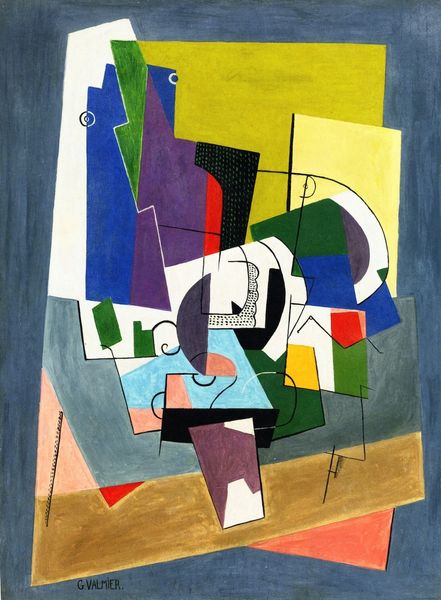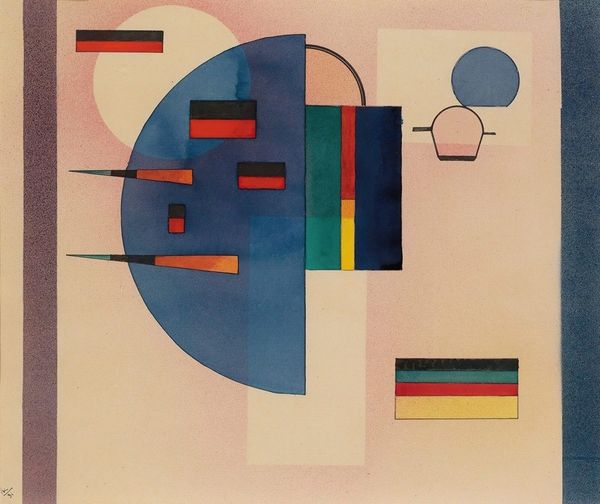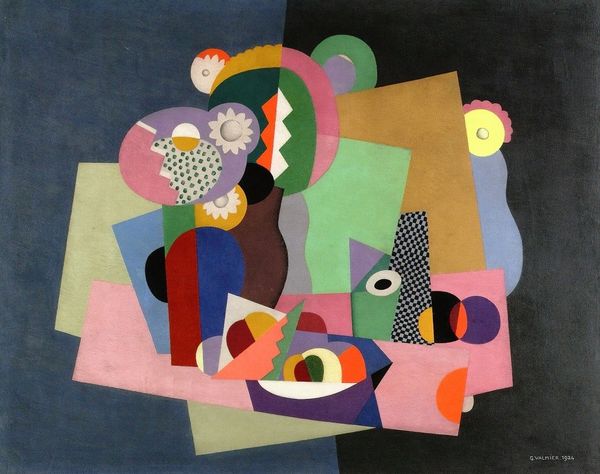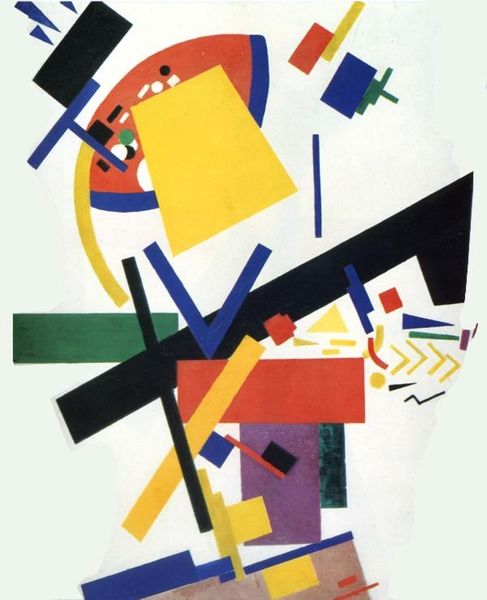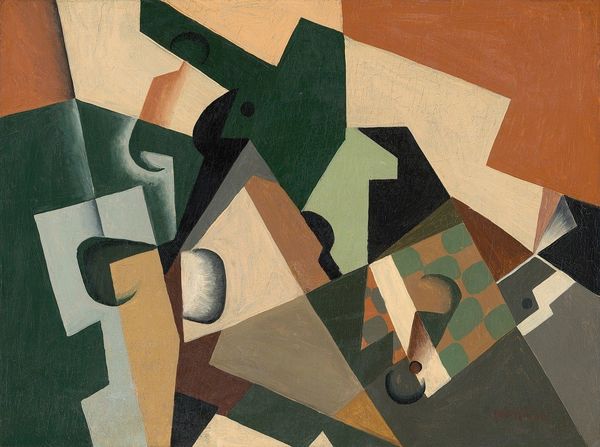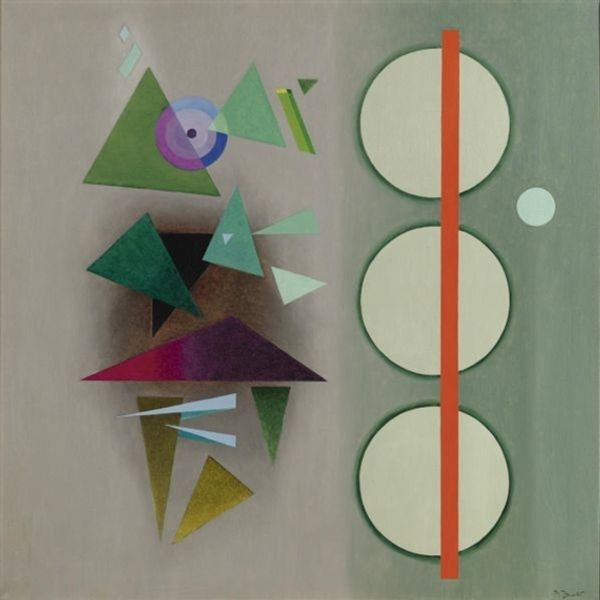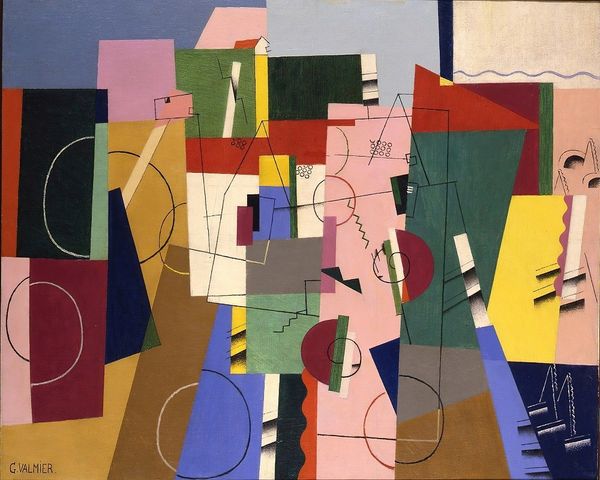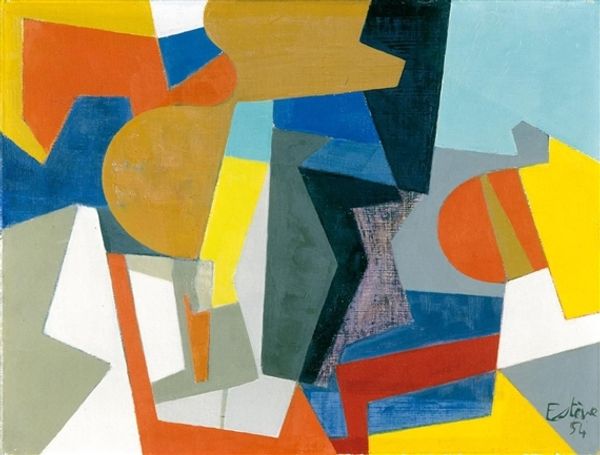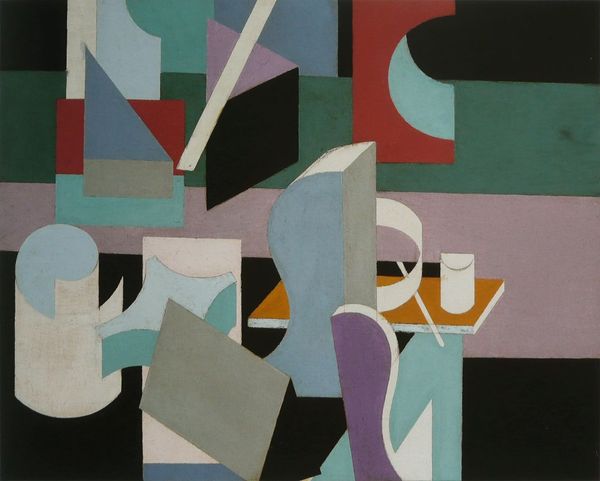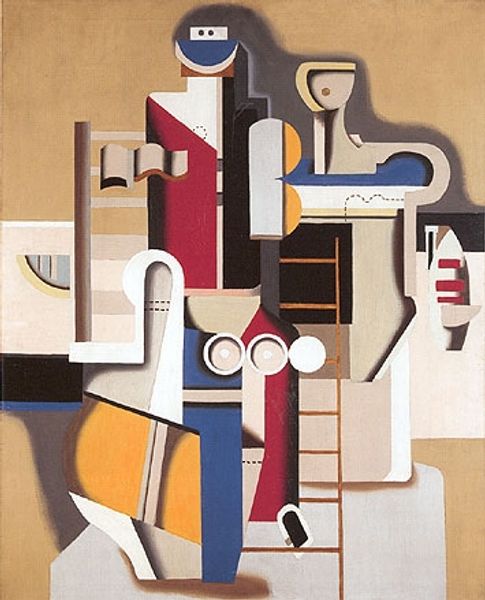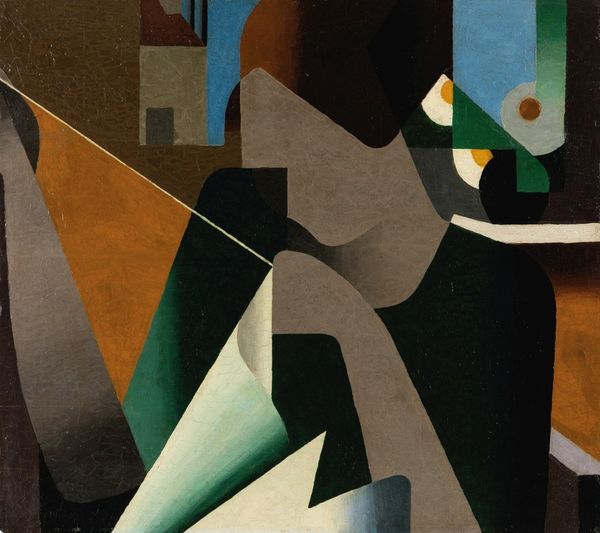
Copyright: Rudolf Bauer,Fair Use
Curator: Rudolf Bauer’s "Invention (Composition 31)", made in 1933 using acrylic on paper, presents a fascinating study in geometric abstraction. Editor: My immediate impression is of organized chaos. The overlapping shapes in pastel hues create a sense of dynamic tension. It’s as if these forms are suspended mid-explosion, revealing the artificial construct of stability and order. Curator: Right, and understanding the sociopolitical moment is crucial. Bauer created this work while part of the "Novembergruppe," a collective of radical artists in Weimar Germany, which was a moment of significant artistic experimentation, caught between the wars. Considering the rise of oppressive forces, these playful geometric structures could be read as an attempt to propose alternative, less rigid ways of being and seeing in the world, perhaps even resisting the emerging social and political structures of the time. Editor: Yes, there’s also the materiality. He chose to employ acrylic paint on paper. The flatness and lightness of the materials almost democratize the image; the accessibility of the supplies emphasizes the idea of construction, deconstruction and assembly, a tactile practice open for social interrogation. This choice undermines the monumentality that's typically ascribed to art and traditional painting practices, particularly oil on canvas, aligning the work to everyday making. Curator: Precisely, and those pastel colours feel charged as signifiers within Bauer's geometric lexicon. This invites interpretations regarding the expression of Bauhaus philosophies, as the social construction of identities or, in simpler terms, the potential role of abstract painting in communicating social meaning. Editor: Absolutely. The colours might reference the artist’s own material conditions too, the supplies available during economic constraints in Europe or alternatively his colour pallet on that particular moment. These seemingly innocent shapes can start alluding to material limitations or, in contrast, explore material exploration. Curator: So, as viewers, we’re invited to participate in constructing and deconstructing these forms, almost like engaging in our own processes of materialisation and identity making, revealing how the interplay of shapes, colors, and context shape our understanding of space and form. Editor: Agreed, looking closer we recognize both a commitment to abstract composition and the wider potential behind exploring materials and the material world that shapes the very nature of painting.
Comments
No comments
Be the first to comment and join the conversation on the ultimate creative platform.
